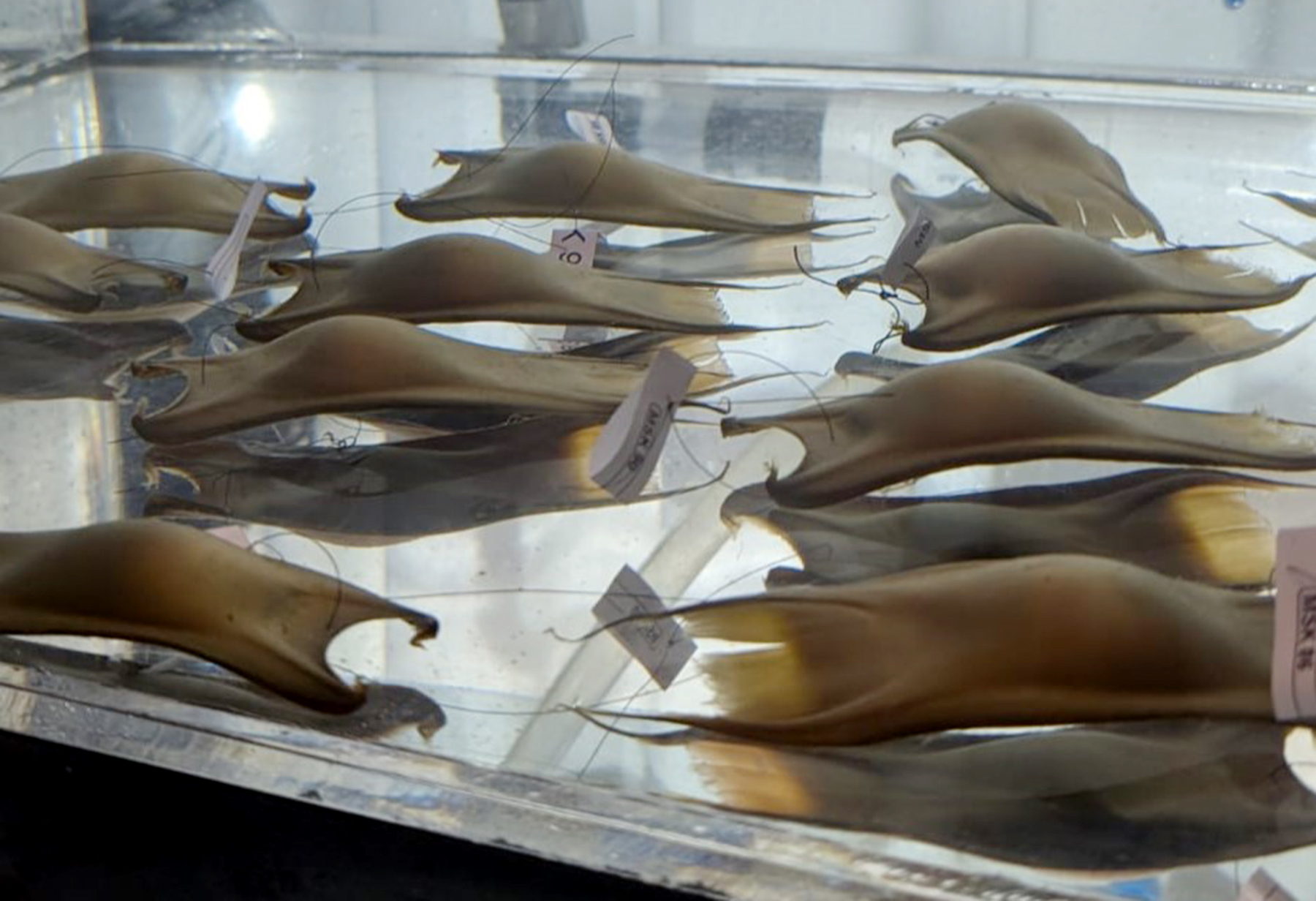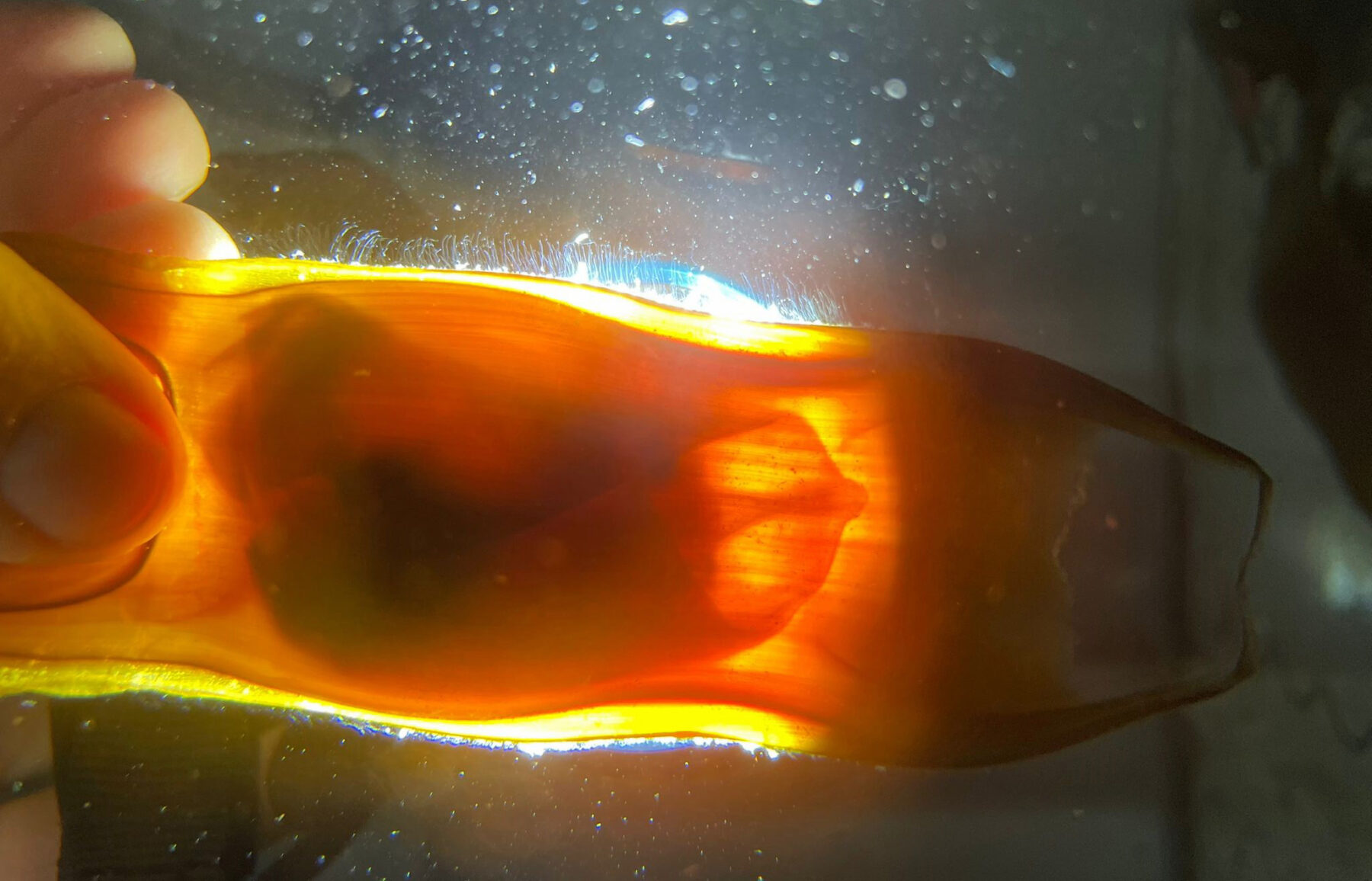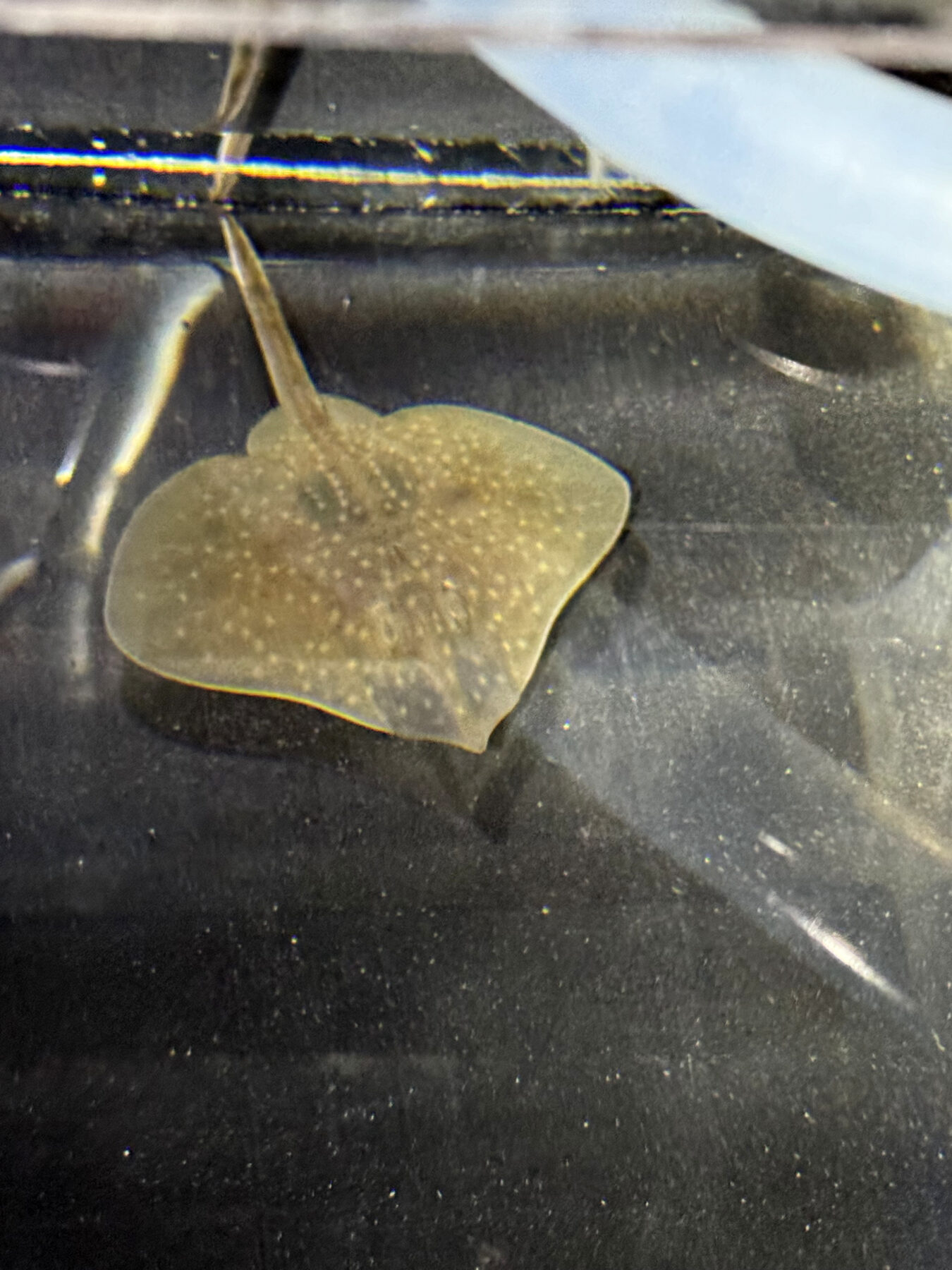Maugean skate baby delivers hope for endangered species

The Maugean skate (Zearaja maugeana) – a species of ray – once dominated Tasmanian waters. In fact, its lineage can be traced as far back as the Cretaceous period, 66 million years ago.
Now classified as endangered, the ancient skate’s population has almost halved in the past decade, restricted to only one remaining habitat – lutruwita/Tasmania’s Macquarie Harbour.
Scientists are so worried the Maugean skate may soon become extinct, they recently lobbied the federal government to downgrade the classification of the species from Endangered to Critically Endangered. Environment Tasmania backed this call for help, adding the demise of the species would be an embarrassment for the current government who made a “no new extinctions” pledge when coming into power.
The classification was not changed, but in recognition of the dire situation, the government committed $5.7 million in funding to help protect the skate. This included $2.1 million to initiate a captive breeding program. The Tasmanian government also contributed $4 million in funding.


The Maugean skate captive breeding program is run by a team at University of Tasmania’s Institute for Marine and Antarctic Studies (IMAS) in a facility at Taroona, near nipaluna/Hobart, Tasmania.
In December last year, an adult female skate was introduced into the program. Laying eggs shortly after, marine ecologists have been working around the clock since to ensure the best outcome.
“The eggs take around seven months to develop, with the first healthy female skate hatchling arriving on 10 July,” says IMAS researcher, Professor Jayson Semmens, who leads the program.
“Successfully producing our first hatchling from a captive-laid egg for this very unique skate is really something to celebrate – and it’s a significant step towards conserving the species.”
The new hatchling is healthy and growing fast, and is hoped to be the first of many.
“The adult female has been laying eggs since her arrival last December – two at a time, every four days on average – and has produced more than 100 eggs to date. So we’re preparing for more hatchlings to make their appearance any time now,” Jayson says.
The IMAS team also brought 50 wild-laid eggs into captivity in December. Half of those are also producing healthy hatchlings, but captive egg-laying is another way to rapidly increase the numbers of animals in captivity, with the ultimate aim to bolster the wild population.
“The next stage is to understand the genetic identity of the Maugean skates we have in captivity and examine how this compares with genetic diversity in the wild population. This will help us determine which animals to retain as founders for a captive population, and which animals could eventually be released,” explains Jayson.
“Genetic sequencing information is crucial for managing a captive population and to achieve our ultimate goal – ensuring the continued existence of the species.”


Head of IMAS Fisheries and Aquaculture Centre, Professor Sean Tracey, says the success of the program to date has been “beyond expectations”.
Not only has the team achieved great success in hatching the species in captivity, adult skates have thrived in the artificial environment.
“We have a low mortality rate of less than 8 per cent, which is also a positive outcome as we didn’t know how the skate would respond to being held in our experimental animal-holding facilities,” says Sean.
Federal Minister for the Environment and Water Tanya Plibersek has also congratulated the IMAS team.
“It is fantastic news that the University of Tasmania has achieved such great outcomes in such a short time,” she said in a statement.
“We’ll keep working with industry, environmentalists and the Tasmanian government… the battle to ensure the future for the endangered Maugean skate is by no means won.”



